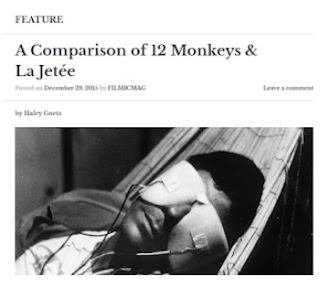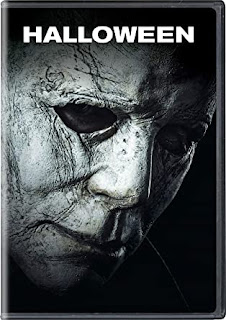Comparing Lee Jetee, the Short, and 12 Monkeys, the Full Length Movie
Chris Marker's 1962 short film "La Jetée" was modified by Terry Gilliam in 1995 to become the feature-length blockbuster "12 Monkeys." Instead of calling his own dystopian narrative a movie, Marker called it a photo book. The film consists of a number of still photos with voiceovers. It has a detached narrator who seems unconcerned with the current situation, which lends a more remote air to a tale about nostalgia for the past. Similar to La Jetée, 12 Monkeys was created by fans of the film and is a purposeful, reverent reworking of Marker's original plot, themes, and concepts. La Jetée is a fascinating low-fi sci-fi time-travel story told in these vignettes, in which a Parisian World War 3 survivor is transported back in time to save mankind before the earth was radioactively destroyed. This editing was exceptional because of its high-concept, action-focused nature. The nameless man in 12 Moneys is chosen because of how tightly he holds onto a picture, such as a childhood memory or the face of a woman on an airport dock. This is a picture book, not a photo album, of course. La Jetée's strength comes from the way the pictures and sounds flow together.
The entire movie is, in essence, a meditation on the passage of time and the established link between Marker's continuous obsession and image-making. In the movie, he genuinely displayed his talents for photography, visual art, and cinematography. In both movies, the main characters escape their restrictions and travel across time, yet they do it without any agency or control. They genuinely just have ephemeral moments and distant memories to treasure with someone who cannot relate to them.
Despite the concept and climatic twist, Marker seems to be least interested in the narrative. Here's where 12 Monkeys comes in; Gilliam and the authors create a riddle that needs to be solved. Like La Jetée, the movie will reach its conclusion with the revelation that the boy saw his own adult death, which accounts for his visions of hunting. Concepts of sanity and distorted wide shots present a distorted view of mankind. Because I now understand and have a sample of how the thriller genre appears in short films, I see this as being helpful to me during the production of my short film. In order to create a menacing and enigmatic narrative, I'll employ comparable camera angles and views.
A man named James Cole is sent back in time in the science fiction film 12 Monkeys in order to stop a terrible epidemic from spreading in the future. The value of a good story and characters was one of the main lessons I learned from watching the movie. A complicated and compelling tale is expertly woven throughout the 12 Monkeys movie, maintaining the viewer's interest and involvement throughout. Additionally, the film does a fantastic job of fleshing out its central characters and the connections between them, making for a full and satisfying viewing experience.
I was able to see how the directors employ numerous strategies, such as language, setting, and visual components, to express the plot and develop the characters while viewing the movie. The movie 12 Monkeys also showed the value of visual storytelling by utilizing spectacular visuals and imaginative set design to further the concepts and ideas of the movie. The film's use of foreshadowing and non-linear storytelling, which switches between multiple time periods to disclose crucial narrative pieces and heighten tension, is another thing I was able to take away from it. I've never seen anything like the way 12 Monkeys tackled filming, especially in this genre.
My takeaway from the article read was how film is an art. A man's voice-over and still, monochrome photos were used to tell the story of the “La Jette”. The omniscient narrator adds an intriguing element and encourages creative narrative telling. Personally, I thought it was great how a series of seemingly unconnected photos came together to tell a tale with a clear beginning, middle, and finish. In his incredibly new and risky picture, Chris Marker created a fascinating and thought-provoking visual extravaganza. The movie is groundbreaking for the era it was created in because it combines well-known aspects of the film medium with brand-new and creative components. In La Jetée, arker revived and redesigned this procedure, animating a series of pictures and giving them a vitality that wasn't before existent. When it comes to adhering to a certain genre or style of filmmaking, Gilliam is a director who has no restrictions. His diverse body of work ranges from being entirely comic to quite gloomy. His 1995 movie 12 Monkeys, which was influenced by La Jetée, expands on Chris Marker's concepts. By stripping away the realism that permeated La Jetée and giving his interpretation of it a more technical bent, Gilliam builds on the universe of that movie. The many devices that are displayed in the laboratories reflect more recent scientific developments, giving Gilliam's movie a more cutting-edge feel. This is going to help us create a beautiful film that is versatile in interpretation. The standard set for creative is very high. I can't wait to see what we will do.




Comments
Post a Comment